Diagnosing and Fixing Problems with Your Automatic Seedling Seeder
2025-10-14 11:53:08
Keep Your Automatic Seedling Seeder Working Smoothly
An automatic seedling seeder plays a vital role in modern agriculture, where efficiency, precision, and consistency define success. These machines automate the delicate process of planting, ensuring uniform seed distribution and faster nursery operations.
However, as with all automated systems, performance can decline over time if parts are worn, dirty, or misaligned. Recognizing and resolving issues early not only maintains productivity but also prolongs machine life.
As a China-based manufacturer specializing in bulk supply of agricultural automation equipment, we’ll explore how to identify and troubleshoot common seeder malfunctions effectively.
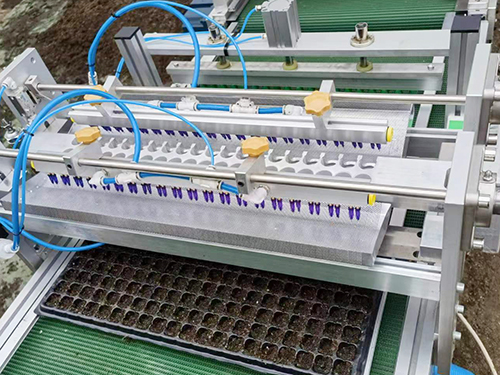
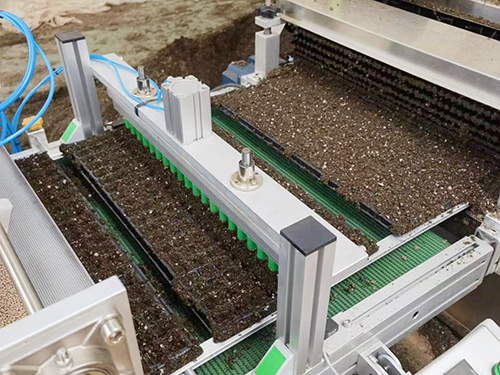
1. How an Automatic Seedling Seeder Works
To troubleshoot effectively, it’s important to understand how an automatic seedling seeder functions.
Typical models consist of several core components working together:
·Seed Container: Holds seeds before distribution.
·Air Suction System: Uses vacuum force to pick up seeds from the hopper.
·Nozzle or Seeding Plate: Transfers individual seeds into trays or soil plugs.
·Electronic Controller: Adjusts air pressure, rotation speed, and timing.
A fault in any of these systems — whether mechanical, pneumatic, or electronic — can lead to poor seeding accuracy.
2. Common Malfunctions and Their Causes
Despite durable designs, seeders may develop issues due to wear, debris, or improper calibration. Below are the most frequent problems farmers encounter:
2.1 Missing or Uneven Seeds
One of the most noticeable issues is inconsistent seeding, often caused by:
·Blocked suction holes from dust or seed fragments.
·Incorrect vacuum pressure settings.
·Seeds with irregular sizes or moisture levels.
Clean the suction system and ensure all seeds are dry and uniform to prevent misplacement.
2.2 Double Seeding
If two seeds fall into one cell, the vacuum pressure is likely too high or the nozzle holes are enlarged. Reduce the suction intensity and inspect the seeding plate for deformation.
2.3 Air Flow Disruption
When air pressure weakens, seeds cannot attach properly to the nozzles. Check:
·Air pump performance and filters.
·Leaks in tubes or seals.
·Dust buildup in suction channels.
Consistent airflow is essential for accurate seed pick-up.
2.4 Mechanical Jamming
Dirt, humidity, or worn components may cause the conveyor or plate to jam.
Clean gears regularly and lubricate moving parts to reduce friction and noise. Tighten loose screws and replace cracked belts if needed.
2.5 Sensor or Electrical Faults
Sensors control tray alignment and suction timing. When the system suddenly stops, inspect:
·Power cable connections.
·Sensor placement and calibration.
·Controller settings or software errors.
Recalibration often restores normal operation.
3. Preventive Maintenance for Long-Term Reliability
Routine maintenance ensures your automatic seedling seeder stays efficient throughout each planting season.
3.1 Daily Cleaning
After each use, empty leftover seeds and remove any soil, dust, or residue. A clean machine prevents clogs and ensures consistent airflow.
3.2 Lubrication Schedule
Add light oil to moving components such as shafts and rollers every few weeks to minimize wear.
3.3 Proper Storage
Keep the machine in a dry, ventilated space. Moisture leads to corrosion and reduces suction efficiency.
3.4 Regular Inspection
Before each planting cycle, inspect air hoses, suction holes, and electrical connections. Replace brittle tubes or worn seals immediately.
4. Conditions That Influence Seeding Accuracy
Several environmental and operational factors can impact your seeder’s effectiveness:
·Seed Size Variation: Uneven seeds cause clogging and misplacement. Screen seeds before filling the hopper.
·Ambient Humidity: Sticky seeds from high humidity reduce air suction performance.
·Power Instability: Voltage drops may interrupt sensors or control boards. Use a stabilizer where necessary.
·Operator Experience: Misalignment or over-speeding the conveyor often leads to uneven planting. Proper training minimizes errors.
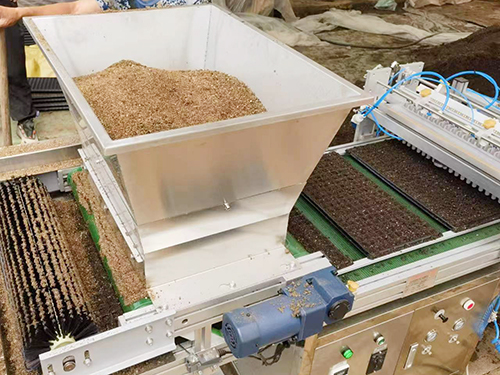
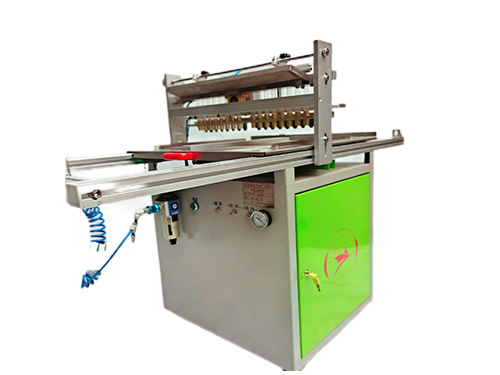
5. Step-by-Step Troubleshooting Method
When your automatic seedling seeder stops performing correctly, follow this systematic approach:
1.Observe the symptom: missing seeds, air loss, or jamming.
2.Narrow down the cause: mechanical, pneumatic, or electrical.
3.Clean the affected section before making adjustments.
4.Repair or replace the damaged component.
5.Recalibrate air pressure and test-run with sample trays.
This method ensures efficient repairs without unnecessary disassembly.
6. Quality Assurance from a China Manufacturer
Choosing a China manufacturer that provides bulk supply of automatic seedling seeders ensures access to reliable equipment, affordable spare parts, and consistent technical support.
Professional production facilities use CNC precision molds, automated assembly lines, and rigorous quality testing to ensure every seeder meets high-performance standards. Whether for greenhouse nurseries or field planting, dependable supply chains help maintain consistent operations.
7. Safety & Handling Tips
While working with automated machinery, safety should always be a priority:
·Power off the machine before cleaning or adjusting.
·Avoid wearing loose clothing that might get caught in moving parts.
·Use dry hands when handling electrical components.
Safety-conscious operation not only protects workers but also extends machine life.
Conclusion: Reliable Performance Starts with Maintenance
Your automatic seedling seeder is the foundation of an efficient planting system. Regular cleaning, correct calibration, and prompt troubleshooting can prevent most operational issues.
By sourcing from a China manufacturer offering bulk supply and professional after-sales service, you ensure access to durable components and stable machine performance.
Keep your automatic seedling seeder in top condition — and your seeding lines will continue running smoothly, season after season.
References
GB/T 7714:Karayel D. Performance of a modified precision vacuum seeder for no-till sowing of maize and soybean[J]. Soil and Tillage Research, 2009, 104(1): 121-125.
MLA:Karayel, D. A. V. U. T. "Performance of a modified precision vacuum seeder for no-till sowing of maize and soybean." Soil and Tillage Research 104.1 (2009): 121-125.
APA:Karayel, D. A. V. U. T. (2009). Performance of a modified precision vacuum seeder for no-till sowing of maize and soybean. Soil and Tillage Research, 104(1), 121-125.

The CNC Seed Braiding Machine is a high-precision, fully automated agricultural equipment s...
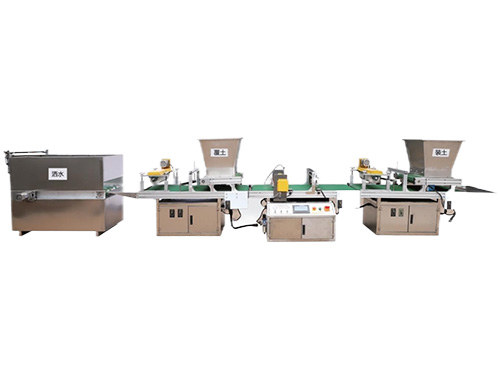
It adopts electrical integration and can be started by pressing the fully automatic button ...
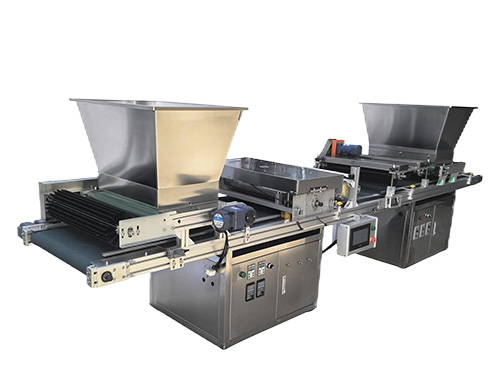
The XP750 seeder has stable performance, excellent product quality, simple and convenient o...
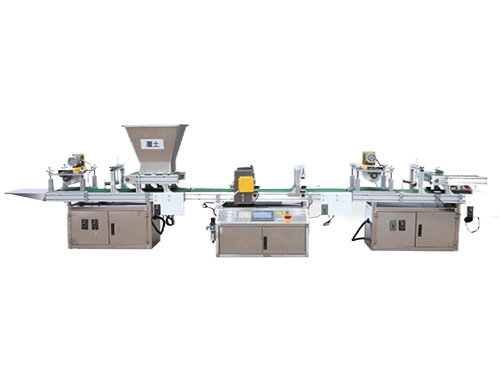
It adopts electrical integration and can be started by pressing the fully automatic button ...



